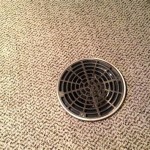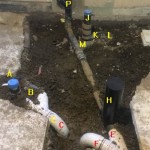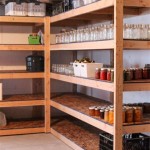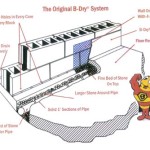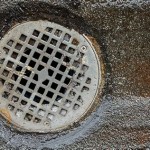White Fuzzy Mold In Basement Walls: Identification, Causes, and Remediation
The presence of white fuzzy mold on basement walls is a common issue faced by homeowners. It is a visual indicator of underlying moisture problems and can pose potential health risks. Identifying the type of mold, understanding the reasons for its growth, and implementing proper remediation strategies are vital steps in addressing this concern. This article will delve into the characteristics, causes, health implications associated with white fuzzy mold and the required remediation processes.
Identifying White Fuzzy Mold
Mold identification can be challenging because mold manifests in varying colors and textures. White fuzzy mold, as its name suggests, often appears as a cotton-like or fluffy growth. It can be difficult to distinguish from efflorescence, a crystalline salt deposit also found on basement walls. Distinguishing between these two is crucial for determining the appropriate course of action.
Efflorescence is commonly mistaken for white mold, but is harmless mineral deposits left after water evaporates from concrete or masonry. It can be identified by scraping a small amount off the wall and dissolving it in water. Efflorescence will dissolve, mold generally will not. Also, the texture of efflorescence is usually crystalline or powdery, not fuzzy. However, relying solely on visual inspection and simple water solubility tests is not enough for positive mold identification. Sending a sample to a qualified laboratory for testing is the most accurate method to determine the type of mold present.
Several types of mold can appear white and fuzzy, including *Penicillium*, *Aspergillus*, and *Cladosporium* species, especially in their early stages of growth. These species have a wide range of colors, starting from white or light gray.
Proper identification is essential, as different types of mold can present varying health risks. While all molds are potentially allergenic, some are more toxic than others. Certain species of *Aspergillus*, for example, can produce mycotoxins, which are toxic substances that can cause more severe health problems. Knowing the particular type of mold allows for targeted remediation and preventative measures.
Causes of White Fuzzy Mold Growth in Basements
Mold thrives in environments with excessive moisture, darkness, and a food source. Basements, by their very nature, are often susceptible to these conditions, creating favorable conditions for mold growth. Addressing the root causes of moisture is paramount to preventing recurrence after remediation.
Water leaks are a primary cause. These may originate from various sources, including leaking pipes, cracks in the foundation walls, or inadequate sealing around windows and doors. Even minor leaks, if left unrepaired, can provide sufficient moisture for mold to flourish.
High humidity levels contribute significantly to the problem. Because basements are often below ground, they tend to be cooler than the rest of the house, causing the air to have a higher relative humidity. Condensation occurs when warm, moist air comes into contact with cooler surfaces, such as concrete walls and floors. This condensation provides a constant source of moisture, fostering mold growth.
Poor ventilation exacerbates the problem. Insufficient airflow traps moisture indoors, increasing humidity levels and preventing surfaces from drying properly. This is usually more prevalent in enclosed basements, where natural air flow is limited.
Organic materials, such as wood, drywall, and paper, provide a food source for mold. These materials are commonly found in basements, particularly in finished basements with drywall partitioning, wooden studs, or stored cardboard boxes. Mold consumes these organic materials, leading to their deterioration and contributing to the problem.
Inadequate drainage around the foundation of the house can lead to water seeping into the basement walls. This can happen when the ground slopes towards the house, allowing rainwater to accumulate around the foundation. Gutters and downspouts that are clogged or improperly directed can also contribute to this problem, allowing water to flow towards the foundation instead of away from it.
Health Implications of Mold Exposure
Exposure to mold can cause a range of health problems, particularly for individuals with allergies, asthma, or weakened immune systems. The severity of the symptoms depends on several factors, including the type of mold, the duration and extent of exposure, and the individual's sensitivity.
Allergic reactions are the most common health effects associated with mold exposure. Symptoms may include sneezing, runny nose, itchy eyes, skin rash, and difficulty breathing. These reactions occur as the body's immune system responds to mold spores released into the air.
Asthma symptoms can be triggered or worsened by mold exposure. Mold spores can irritate the airways, leading to coughing, wheezing, chest tightness, and shortness of breath. For individuals with pre-existing asthma, mold exposure can lead to severe asthma attacks that require medical attention.
Irritation of the eyes, nose, and throat is frequently reported in individuals exposed to mold. The volatile organic compounds (VOCs) produced by mold can irritate the mucous membranes, causing symptoms such as burning sensations, sore throat, and nasal congestion.
In some cases, mold exposure can lead to more severe health problems, such as lung infections. This is especially true for individuals with weakened immune systems, such as those undergoing chemotherapy or living with HIV/AIDS. Certain types of mold, such as *Aspergillus*, can cause invasive infections that affect the lungs and other organs.
Even healthy individuals can experience adverse health effects from prolonged exposure to mold. Chronic exposure can weaken the immune system, making individuals more susceptible to infections and other health problems. Some studies have also linked mold exposure to cognitive impairment, fatigue, and other neurological symptoms.
Remediation Process for White Fuzzy Mold
Effective mold remediation requires a systematic approach that addresses both the mold growth and the underlying moisture problems. It is essential to hire a trained and certified mold remediation professional for extensive contamination. Attempting to remove mold without proper protection and techniques can spread spores and exacerbate the problem. If the mold infestation is less than 10 square feet, homeowners may attempt remediation themselves, following strict guidelines.
Before any remediation work begins, the source of moisture must be identified and corrected. This may involve repairing leaks, improving ventilation, and addressing drainage issues. Failure to address the underlying moisture problems will result in the mold returning.
Containment is a critical step to prevent the spread of mold spores to other areas of the house. This typically involves sealing off the affected area with plastic sheeting and using negative air pressure to prevent spores from escaping. This is typically done by professionals to ensure a safe and efficient remediation.
Personal protective equipment (PPE) is essential to protect workers from exposure to mold spores. This includes wearing respirators, gloves, and protective clothing. These items prevent inhalation and skin contact with mold during the remediation process.
Mold removal can be accomplished through several methods. These include but are not limited to: HEPA vacuuming to remove loose mold spores and debris; wet wiping surfaces with a mold-killing solution; and in severe cases, removing and discarding contaminated materials such as drywall and insulation. Always follow the manufacturer's instructions when using mold-killing solutions.
After mold removal, the affected area should be thoroughly cleaned and disinfected. This helps to remove any remaining mold spores and prevent future growth. Antimicrobial treatments are often used to further inhibit mold growth.
Post-remediation verification is essential to ensure that the mold has been effectively removed. This typically involves visual inspection by an independent microbial consultant and air sampling to assess spore levels. If the verification tests indicate elevated spore levels, further remediation may be necessary.
Once the remediation process is complete, steps must be taken to prevent future mold growth. This includes maintaining proper ventilation, controlling humidity levels, and regularly inspecting for leaks and moisture problems. A dehumidifier can be used to maintain humidity levels below 50% in the basement.

How To Get Rid Of And Prevent Mold Growth On Concrete Environix

Learn What Is Efflorescence

White Fluffy Mold On Concrete It S Salt Silly Askthebuilder Com

White Mold Is It Dangerous How To Remove Busters

Identifing Efflorescence And Mold Growth Environix

Understanding White Mold Types Causes Prevention Treatment

White Mold Is It Dangerous How To Remove Busters

Is White Mold Dangerous How To Get Rid Of

White Mold Is It Dangerous How To Remove Busters

How To Get Rid Of And Prevent Mold Growth On Concrete Environix
